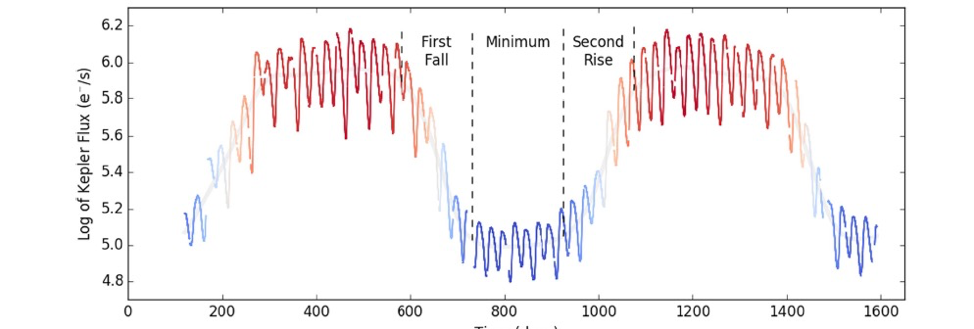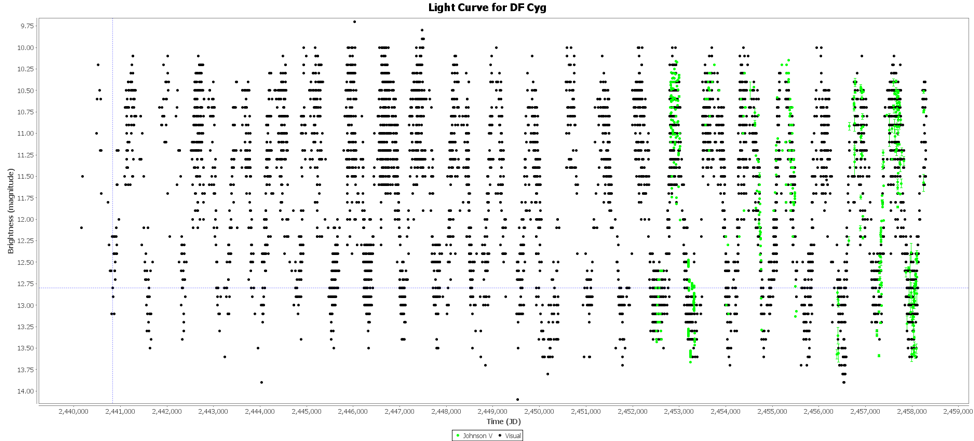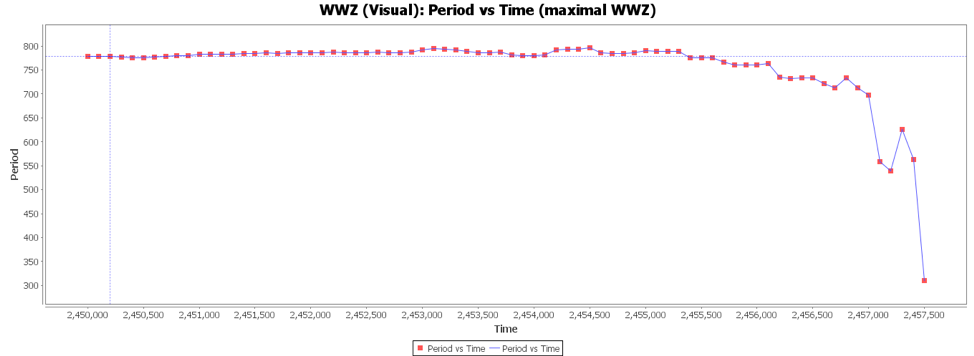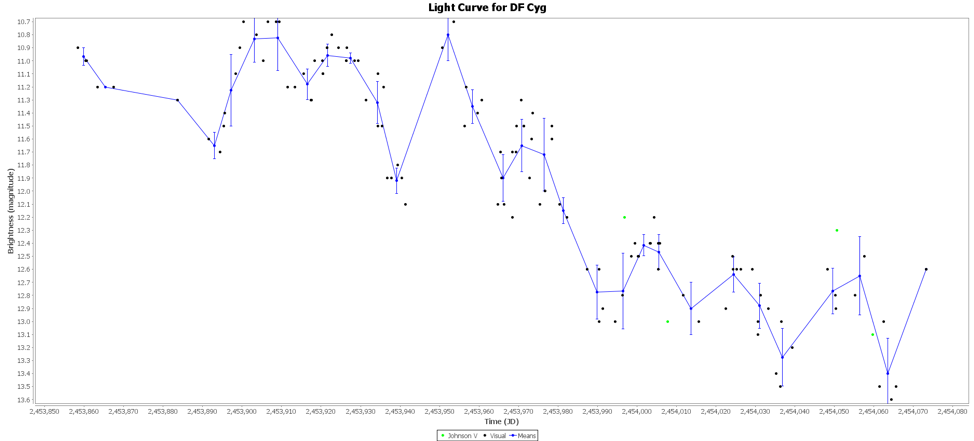DF Cygni by Rich Roberts
DF Cygni (is an archetypal RVb type star discovered by Margaret Harwood in 1926. She discovered the star while serving as the Director of the Maria Mitchell Observatory in Nantucket, MA using a 7.5 inch Cooke triplet refractor. She continued to observe the star for several years and published her results in 1937. She calculated a regular short double period of 49.8 days and a longer secondary period of 790 +/- 10 days. She also noted that the spectrum near maximum resembled that of R SCT based on observations from the Mount Wilson Observatory (Harwood, 1937).
DF Cygni has been regularly observed by AAVSO members since October 1968 with 6,855 observations in the AID, of which 5,340 are visual. Bodi et al (2016) did a study which compared the accuracy of the AAVSO data relative to the precise photometry done by Kepler over the telescope’s four year mission. DF Cygni was the only RV Tau type star in the Kepler field. The visual data submitted by 110 amateur astronomers had a typical precision of +/- 0.3 magnitudes. Both Fourier and wavelet analysis on the Kepler and AAVSO data yielded remarkably similar results and highlights the importance of and usefulness of our continued work.
DF Cygni displays the alternating shallow and deep minima which is typical of RVb stars. The cause of this behavior is not well understood. The two main hypotheses for this behavior is that the stars are either double-mode pulsators or that they are exhibiting low-dimension chaos (Percy, 2007). Vega (2017) suggests the long period minima is due to an opaque dust which blocks ~90% of the system’s flux at minima and would account for the star’s IR excess.
Below is a graph from the Kepler data showing flux vs time over two long period cycles and really shows the dual periodicity, which is a defining characteristic of this class star.

Here are light curves from the AAVSO data. The first light curve is all the data and the second is just 10 cycles (about 7500 days).


Looking at these curves, it is easy to think you’re looking at a Mira. A DCDFT scan or a WWZ analysis performed on data from these time scales will only result in the long period showing up. Folding these light curves into phase plots using the period in VSX, 50.08 days, will result in a garbled mess on these time scales. The period of 778.1 days is required in order to get a workable phase plot.

By truncating the light curve into a part of single cycle, the short period becomes more evident. For this light curve, I chose the epoch as a date when the cycle was clearly past the long period peak (JD 2,453,858) and ended it before the long period minimum (JD 2,454,076). This 218 day period of the light curve is as follows:

This 218 day light curve is a little noisy, but you can clearly see there is oscillation occurring as the longer term trend descends towards its minimum brightness. The trend line is a five day binned average to help show the trend. Both DCDFT and WWZ analysis for this 218 day stretch of the light curve showed a period of 55 days, which is higher than the known period, but understandable based on the scatter of these data points.
DF Cygni is located at 19h48m53.94s RA and 43d02m02.14s, which makes it well placed for observers in mid-northern latitudes during the summer and fall months. It is easy to find lying near the western edge of the Northern Cross, just south of Delta Cygni. It is a fairly bright star which ranges from ~10.5 to 13 magnitude.
Continued coverage of DF Cygni is recommended. For one, the nature of RV Tau stars is not completely understood. They are rare stars concentrated across the plane of the Milky Way. Also, these stars are in their final transition from the AGB towards becoming a white dwarf. It is believed that stars do not spend a lot of time (relative to a star’s lifetime, probably a few thousand years) making this transition through the instability strip of the H-R diagram. It is possible we may see one make this transition.
References:
Bodi, A., Szatmary, K., Kiss, L. “Periodicities of the RV Tauri-type pulsating star DF Cygni:
A Combination of Kepler data with ground based observations.” Astronomy &
Astrophysics, 565 (2016), pgs A24 1-8.
Harwood, M. “The Complex Variations of DF Cygni.” Harvard College Observatory
Tercentenary Papers, No. 28 (1937).
Percy, J. (2007). Understanding Variable Stars. New York, NY: Cambridge University Press.
Vega, L., Stassun, K., Montez, R., Boyd, P., and Somers, S. “Evidence for Binarity and Possible
Disk Obscuration in Kepler Observations of the Pulsating RV Tau Variable DF Cygni.
The Astrophysics Journal, 839:48, April 2017.

